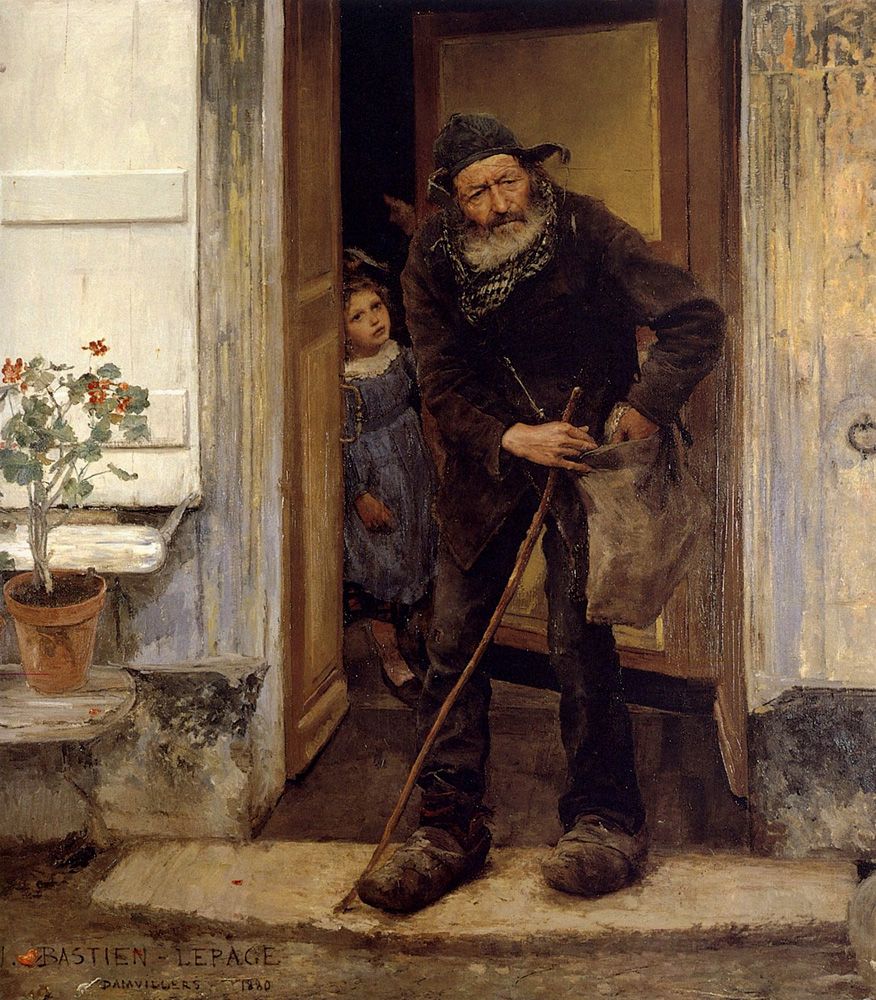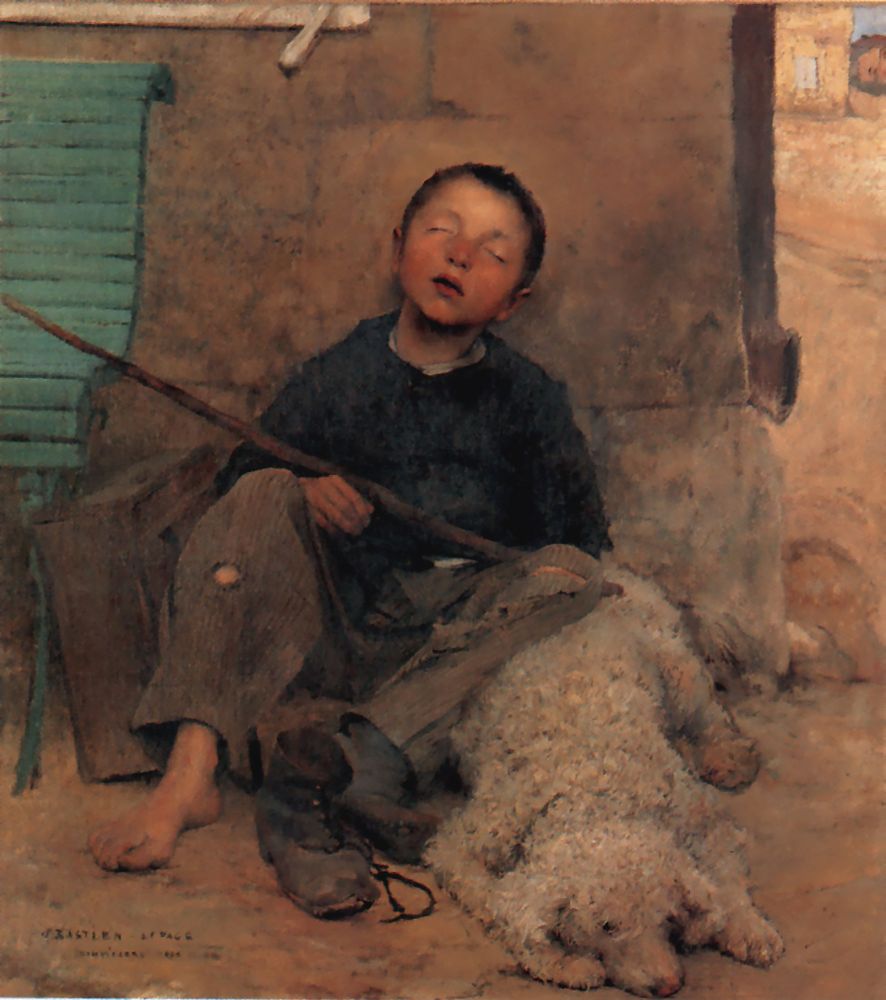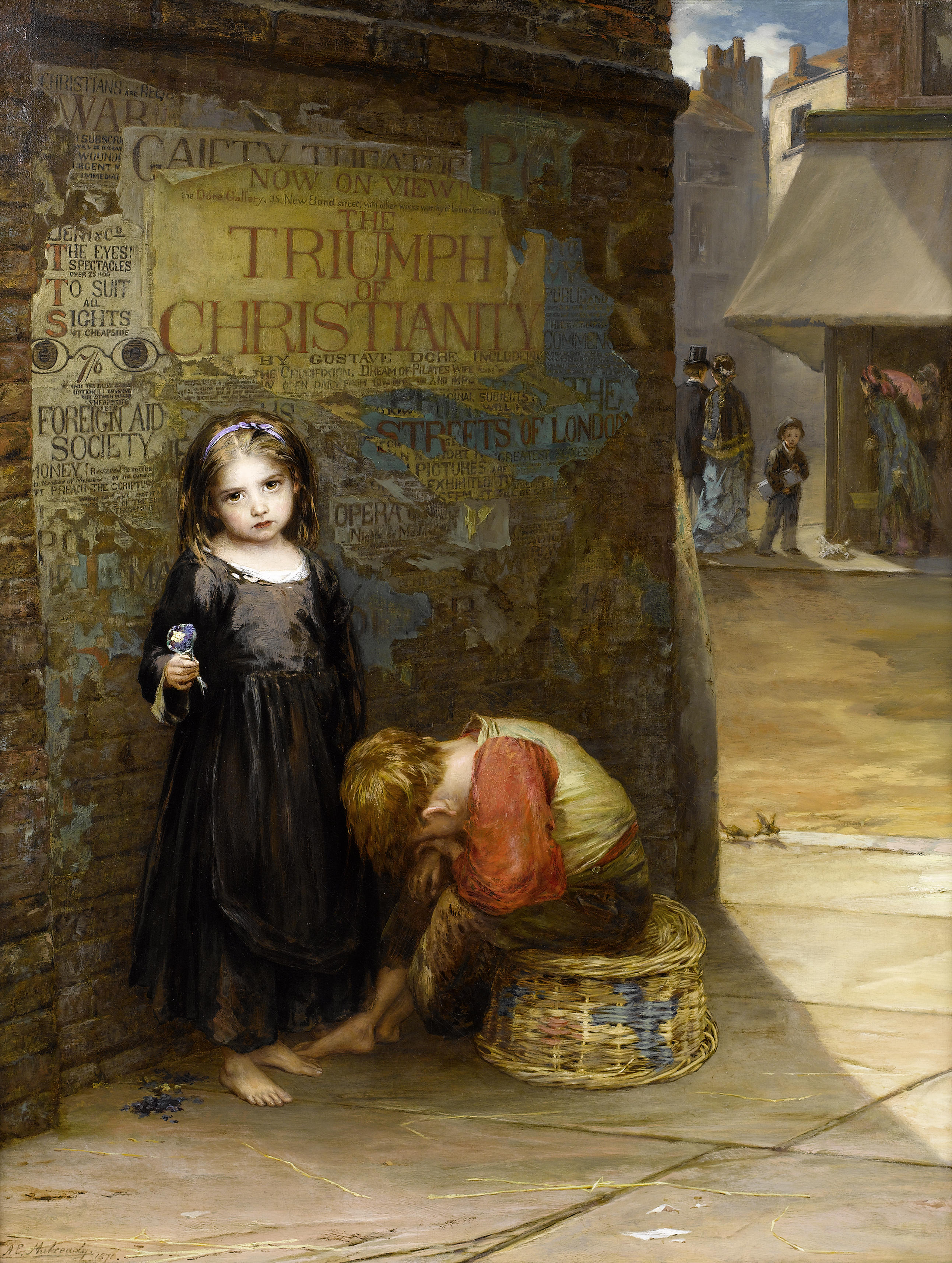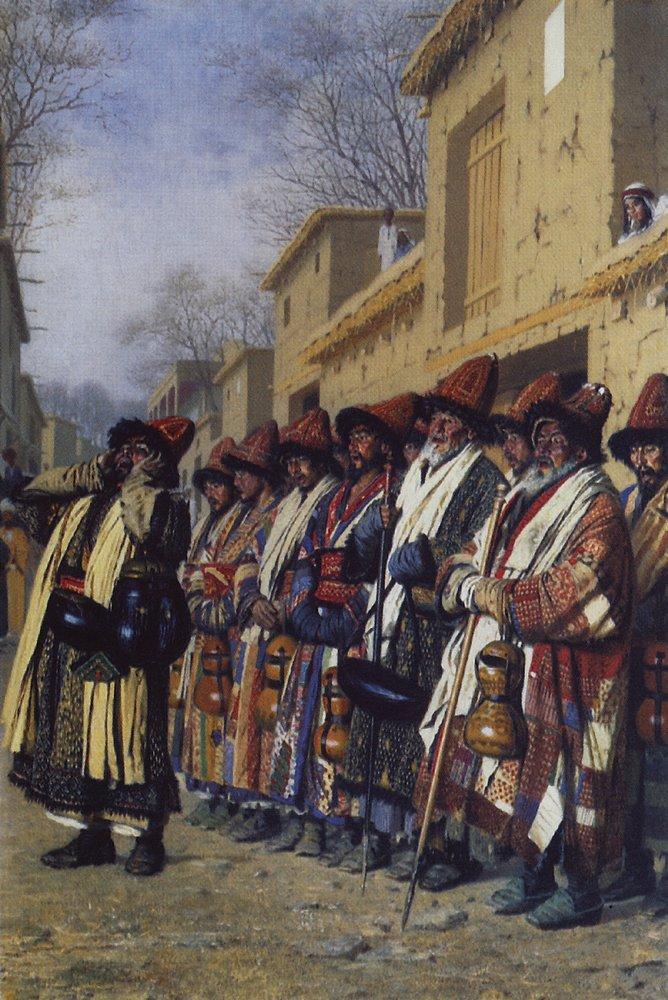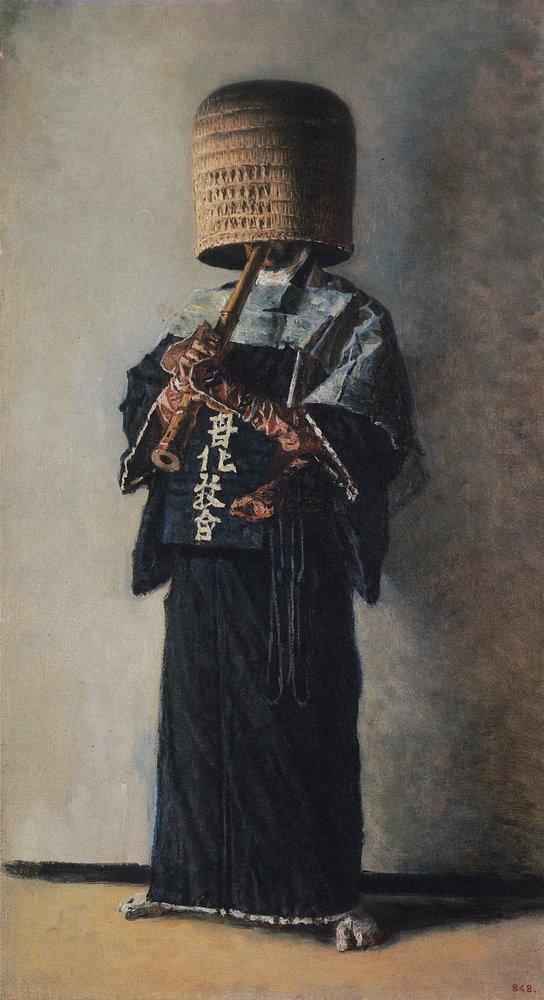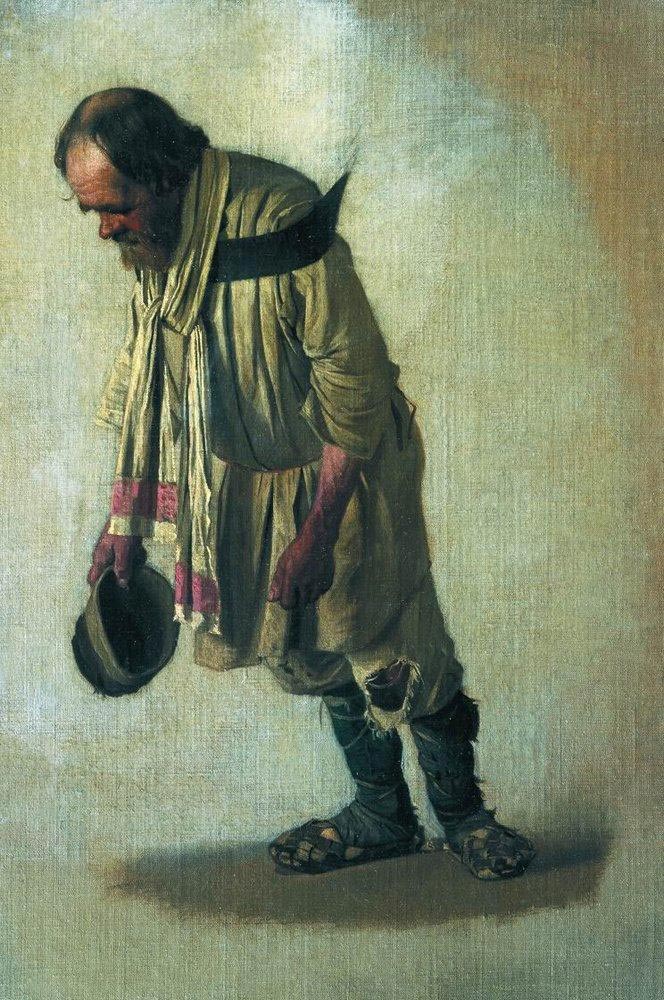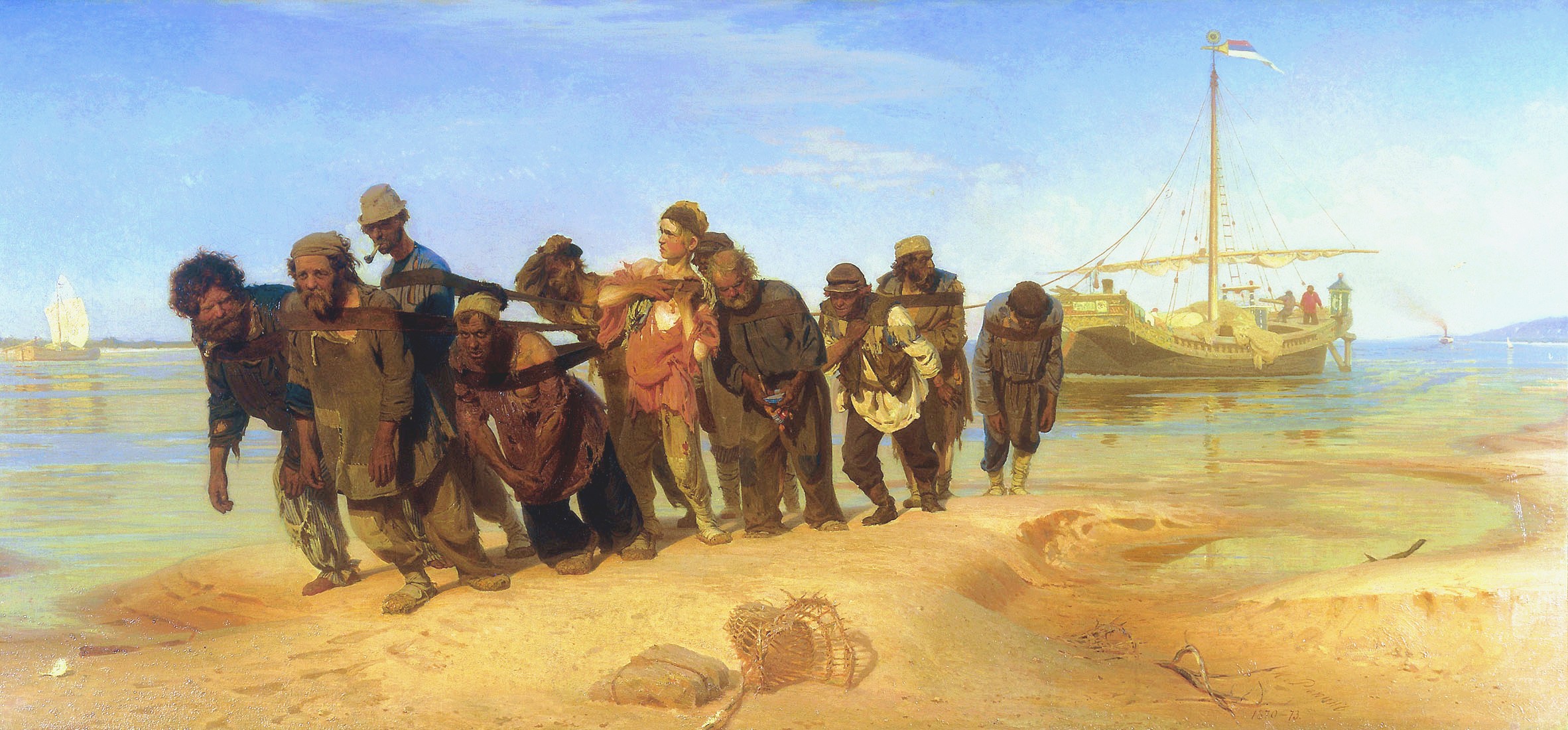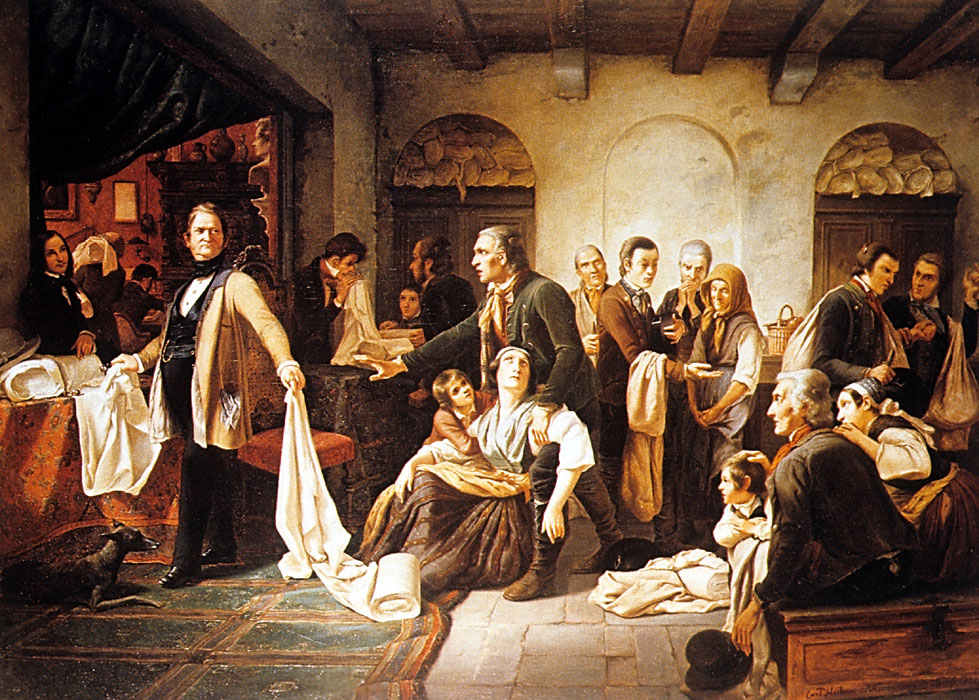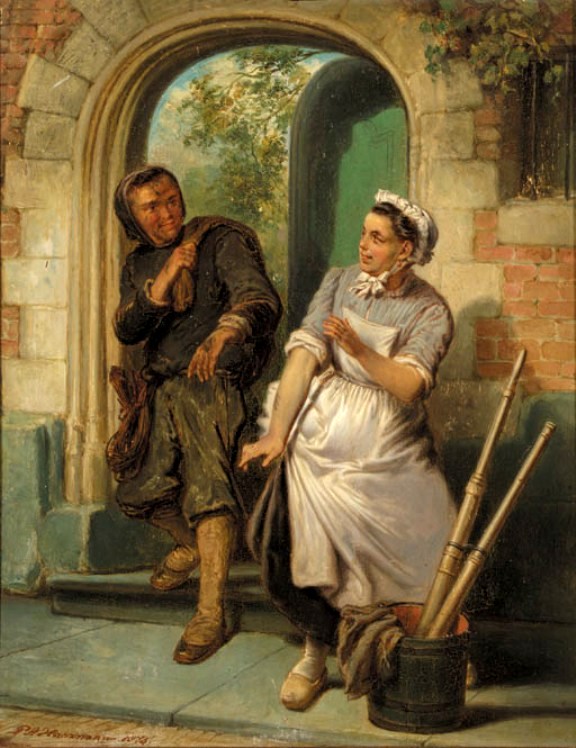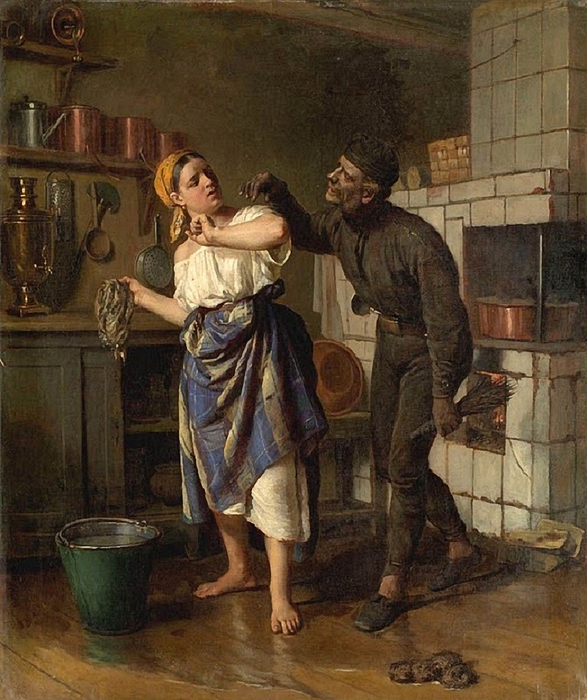The 19th century was a period of social and economic change and a century of industrialisation. Compared to our current standards of social welfare, there was bitter poverty for many people and the society was harsh regarding help. The common idea was that people were responsible for the circumstances they lived in and that poor people were lazy people who did not put enough effort to improve their situation.
Jules Bastien Lepage,The Beggar
Of course there were exeptions and if someone had a handicap and especially a child, people tended to be more merciful.
Jules Bastien Lepage, The Blind Beggar
These depictions of poor children were also used by social realists like Augustus Edwin Mulready. They match perfectly with the stories of Charles Dickens. In the painting below the sharp contrast is illustrated between the well fed and clothed children of the upper class versus the homeless street children in which the meaning of true christianity is challenged.
Augustus Edwin Mulready, Uncared for, 1871
Vasily Vereschagin, chorus of dervishes begging in tashkent,1870
Poverty and begging is of all times and of all places. Different cultures result in different expressions of begging. In Central Asia beggars formed collectives who originally started as religious orders were poverty was a way of living. They chanted hymns and one of those melodies survived to the present day because of Beethoven who found an old transcription and transformed it in his Chorus of Dervishes opus 113 which includes his Turkish March (not to be confused with the Turkish March of Mozart).
Vasiliy Vereschagin, Japanese beggar, 1904
In Japan, Vereschagin met a special mendicant order of the Fuke school of Zen Buddishm : the Komuso monks. They had a typical appearance with their heads completely covered by straw hats and playing a bamboo flute to collect alms. These were mostly old samurai warriors who’s master had died and who chose not to perform suicide (which was the code of honour). Masterless samurai were called ronin and often chose to become komuso monks which granted them the possibility of free travel. It is said that their flutes were slighly bigger than flutes were supposed to be, so that they could double as a weapon.
Begging however was not the first choice for poor people, throughout history people have done hard labour to earn just a few coins to feed their children. One of this jobs was pulling ships by a rope, the so called barge hauling.
Vasily Vereshchagin, study for barge hauler
The most famous painting about barge hauling is from Ilya Repin.
Ilya Repin, barge haulers on the wolga, 1872
The sharp distinction between the rich merchandisers and the producing working class was painfully illustrated by the German Hubner in his scene of the Silesean weavers in which the manufacturer is rejecting a piece of linen cloth, thereby ruining the poor woman who made this piece and therefore faints. The whole situation ended in a revolt which was the first major strike in Germany and the beginning of labour unions.
Carl Wilhelm Hubner, The Silesean weavers, 1846
We will end this guided tour by a meeting of two poor cleaning servants, a chimney sweep and a maid. Although both performing cleaning duties, the two should better not meet indoors, a theme that was explored by the Dutch Haaxman and the Russian Zhuravlev.
Pieter Alardus Haaxman, Chimney sweeper and the maid,1876
Firs Zhuravlev, Chimney sweep

